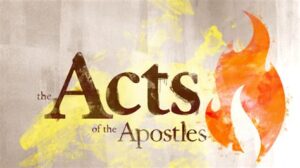Ad – The Letters of Paul
The Letters of Paul
First Missionary Journey: Part of the Big Four
1. Galatians (about salvation) written in 48 from Antioch
Second Missionary Journey:
2. First Thessalonians (about the end times) written in 50 from Corinth
3. Second Thessalonians (about the end times) written in 50 from Corinth
Third Missionary Journey: Part of the Big Four
4. First Corinthians (about salvation) written in 55 from Ephesus
5. Second Corinthians (about salvation) written in 56 from Macedonia
6. Romans (about salvation) written in 57 from Corinth
Paul’s Journey to Rome: Prison Letters
7. Ephesians (about Christ) written in 60 from Rome
8. Colossians (about Christ) written in 60 from Rome
9. Philemon (about Christ) written in 60 from Rome
10. Philippians (about Christ) written in 61 from Rome
Fourth Missionary Journey: Pastoral Letters
11. First Timothy (about the Church) written in 64 from Macedonia
12. Titus (about the Church) written in 64 from Macedonia
13. Second Timothy (about the Church) written in 67 from Rome



